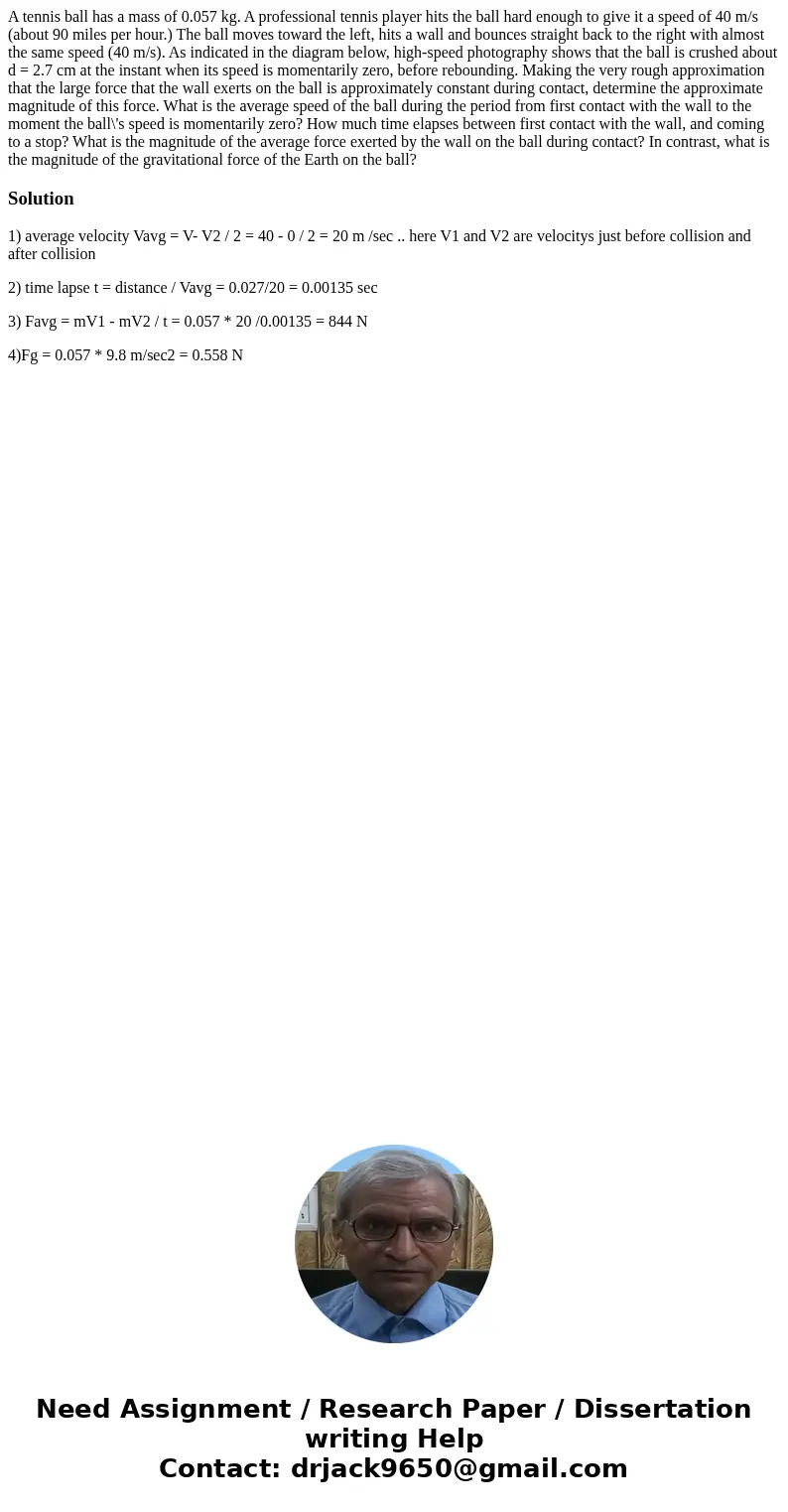A tennis ball has a mass of 0057 kg A professional tennis pl
A tennis ball has a mass of 0.057 kg. A professional tennis player hits the ball hard enough to give it a speed of 40 m/s (about 90 miles per hour.) The ball moves toward the left, hits a wall and bounces straight back to the right with almost the same speed (40 m/s). As indicated in the diagram below, high-speed photography shows that the ball is crushed about d = 2.7 cm at the instant when its speed is momentarily zero, before rebounding. Making the very rough approximation that the large force that the wall exerts on the ball is approximately constant during contact, determine the approximate magnitude of this force. What is the average speed of the ball during the period from first contact with the wall to the moment the ball\'s speed is momentarily zero? How much time elapses between first contact with the wall, and coming to a stop? What is the magnitude of the average force exerted by the wall on the ball during contact? In contrast, what is the magnitude of the gravitational force of the Earth on the ball?
Solution
1) average velocity Vavg = V- V2 / 2 = 40 - 0 / 2 = 20 m /sec .. here V1 and V2 are velocitys just before collision and after collision
2) time lapse t = distance / Vavg = 0.027/20 = 0.00135 sec
3) Favg = mV1 - mV2 / t = 0.057 * 20 /0.00135 = 844 N
4)Fg = 0.057 * 9.8 m/sec2 = 0.558 N

 Homework Sourse
Homework Sourse